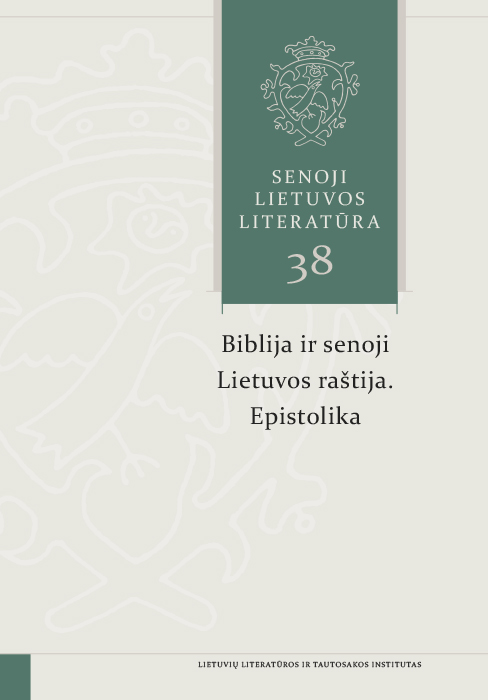Methods of Translation of the First Lithuanian and Polish Protestant Bibles: Bibles of Brześć and Gdańsk, and Translations by Bretkūnas and Chylinski
Abstract
The aim of the article is to examine translation methods underlying the earliest Protestant versions of the Bible in Polish and Lithuanian on the basis of a comparative analysis of selected fragments. The article focuses on two basic approaches to Bible translating, viz., the ad verbum and the ad sensum methods, as seen in the Septuagint, the Vulgate, and the most influential Bible translations of the Middle Ages and Renaissance. Special attention is paid to the Protestant versions.
In the analytical part of the article, we compare fragments from Bretkūnas’ and Chylinskis’ versions, as well from the Brześć and Gdańsk Bibles with the original texts and with the sources of direct translation (Luther’s Bible and the Dutch States Bible), with a side glance at the Vulgate. For comparison, we have singled out a number of places that were difficult to translate due to specific linguistic features of the original texts, so that the translators were faced with the alternative of either sticking to the letter of the Hebrew or Greek text or attempting to render its sense using the resources of the target language. In most instances, characteristically Hebrew or Greek syntactic constructions or idioms were involved. We show that some translators sought to preserve the constructions of the Hebrew or Greek original, whereas others avoided them, leaving out the elements that performed a purely grammatical function in the original languages and searched for idiomatic means of expression commonly used in the target language. We also speculate on the motives that could have induced the translators to select one translation strategy or the other. In the concluding part, we seek to discern the guiding principles determining the choice of a translation method and to link them to the social and cultural circumstances attending the preparation of the Bible versions discussed here as outlined in the introductory part of the article.
